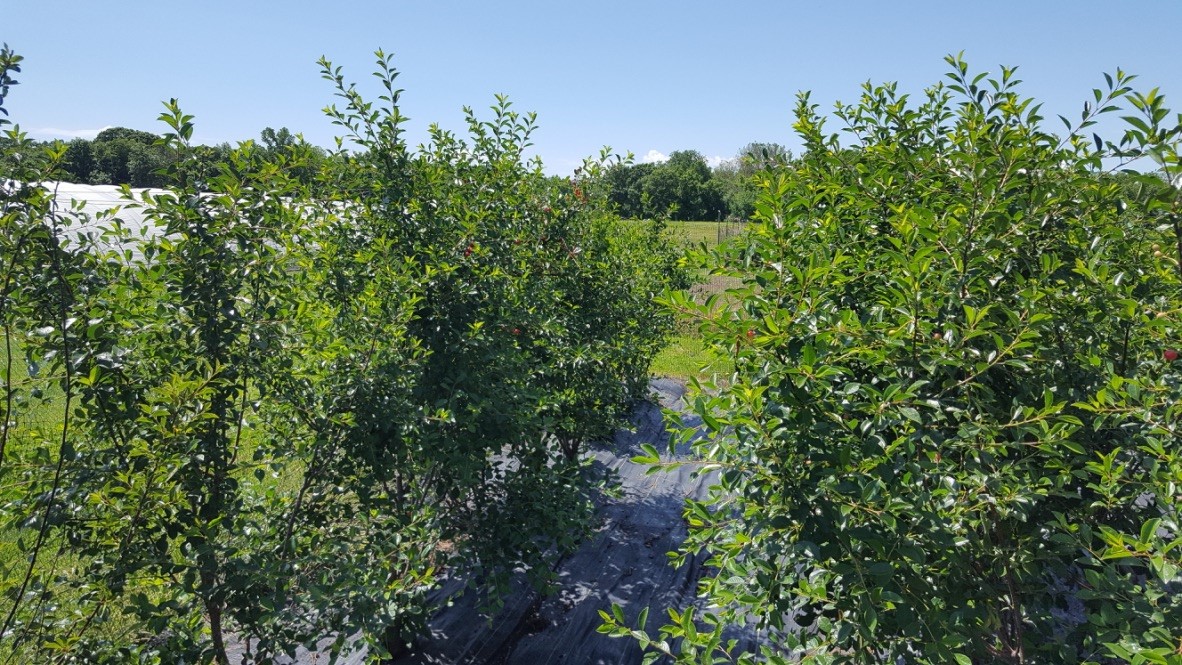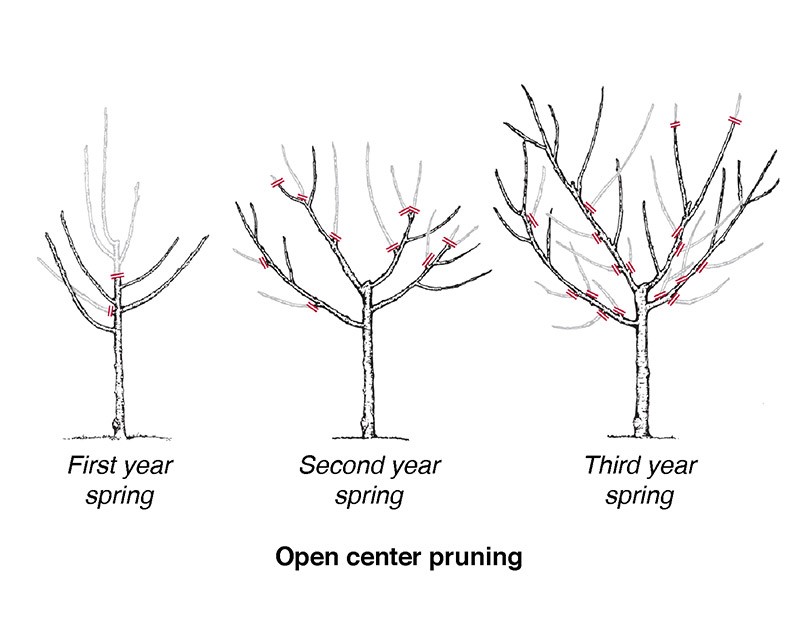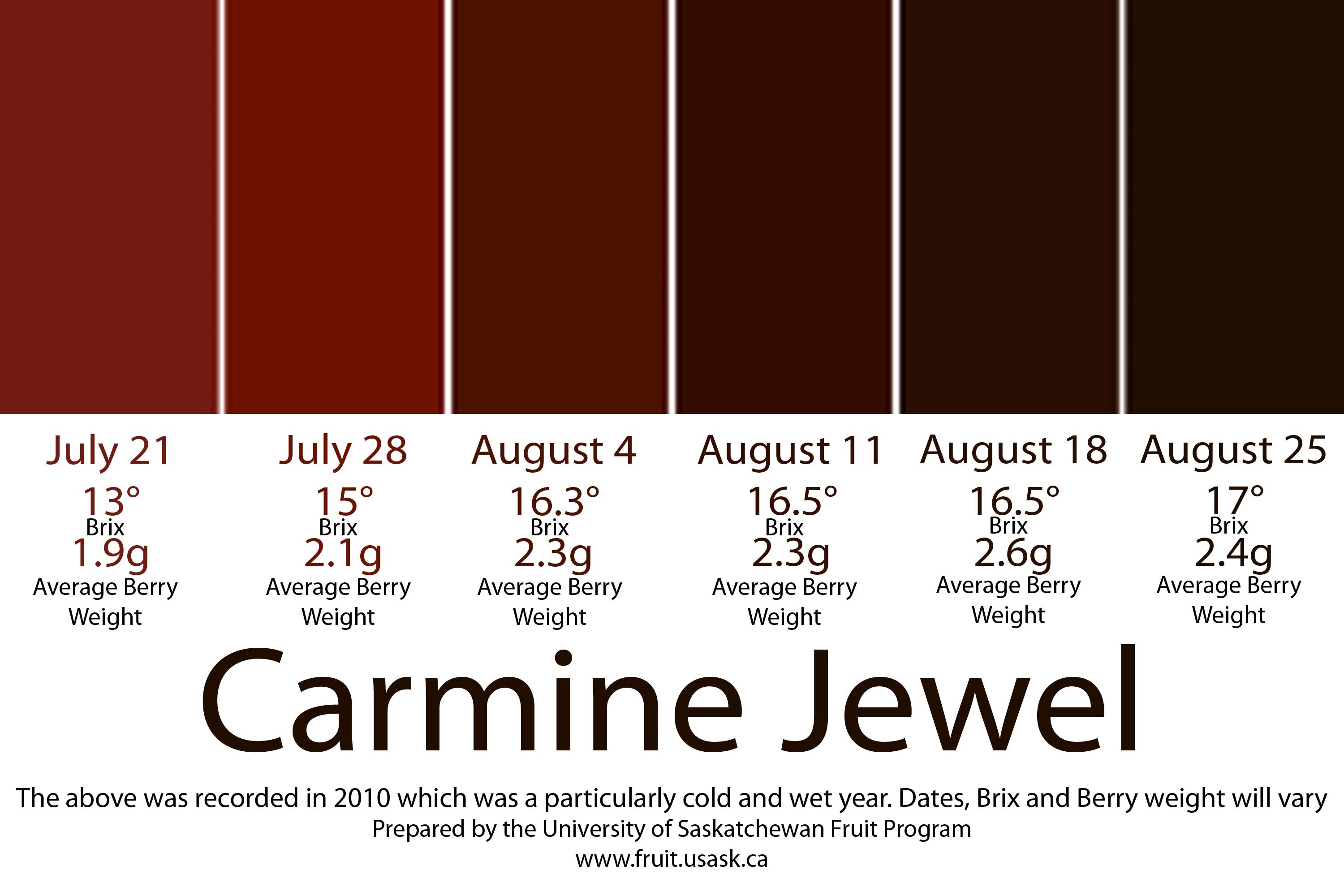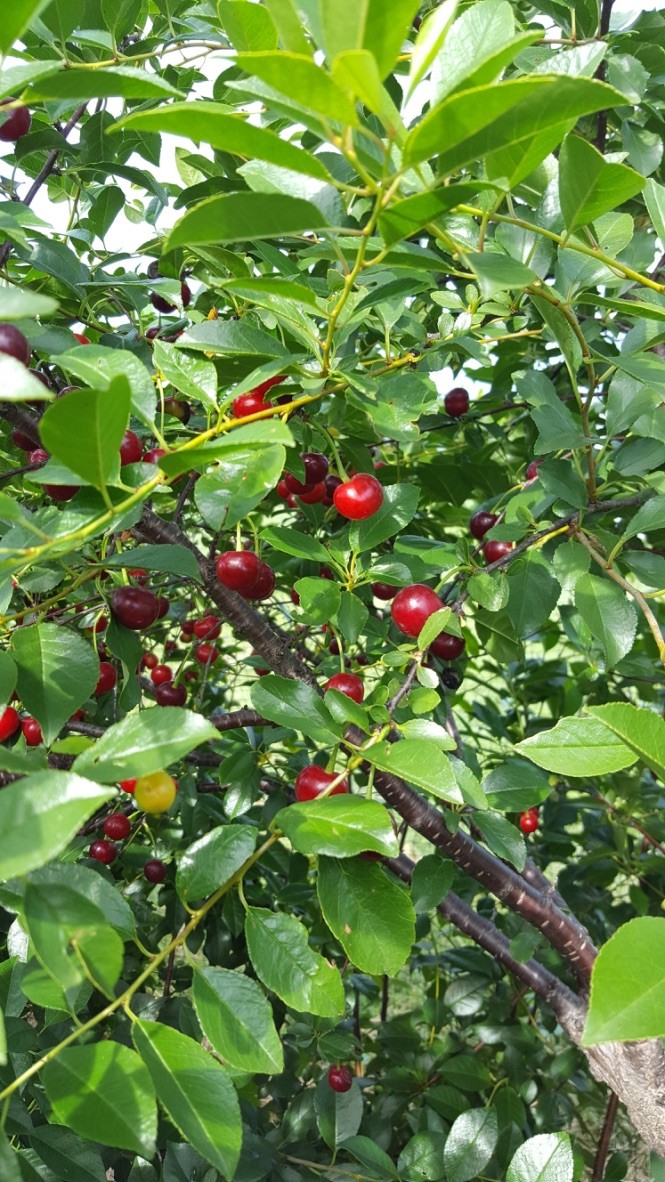Fall Planting Dwarf Sour Cherries
As things start to wind down with annual fruit and veg plantings, fall is an excellent to plant fruiting trees and shrubs for perennial harvests.
“Sour cherries” (Prunus cerasus), often referred to as tart or acidic varieties, are sought after for fresh, dried and preserved use. Compared to sweet types (Prunus aviums), sour cherry trees are more cold hardy (USDA Hardiness 4 - 6) and considered to be better adapted for Midwest growing conditions.
Sour cherry fruits are juicier than sweet types and have the same and sometimes more sugars. Although sour cherry trees are smaller than P. aviums, they can still reach heights between 15 and 25 ft. These varieties require ladders and other special equipment for pruning and harvesting. The attempts to graft cherry plants on to shorter growing rootstocks have been inconsistent. Although there are some semi dwarf sour cherry cultivars, e.g. ‘North Star’ and ‘Evans’, that are cold hardy and shorter growing (10-14 ft), there are very few options for growers with limited space.
Thanks to recent breeding efforts at the University of Saskatchewan, which have successfully crossed sour cherry with “Mongolian” shrub type cherries (Prunus fructicosa), farmers and gardeners now have access to a hybrid offspring known as the dwarf sour cherry (Prunus x kerrasis). Commercial genetic dwarf cultivars, e.g. ‘Carmine Jewel’ and ‘Crimson Passion’, are grown on their own rootstock, and adapted to a wide range of climates (USDA Hardiness 3 - 8). Mature plants grow to a size of 5 -7 ft tall, can be planted as hedgerows. These dwarf types are an ideal size for hand harvest and can also allow the use of mechanical over-the-row harvesters commonly used with blueberries.
Planting:
Recommended plant spacing should be at least 3 ft in row. The spacing between rows should be similar and/or accommodate the size of cultivation and harvesting equipment. Most well-drained soil types (pH 6 – 7) are compatible with field planting, although sandy loam types are ideal. Dwarf cherries thrive in full sun and will benefit from windbreaks in especially cold areas. Regular watering is especially in the first 2 – 3 years after planting. Grass can compete with root development and so mulching is recommended a meter out from the trunk base. Keeping the ground clear around tree will enable the dwarf sour cherry to it reach full size in 5 years.

Picture 1- Tree spacing and size at ~5 years (K-State Olathe Horticulture Center in ’17)
Fertility
Cherries typically require less fertility inputs than other fruit trees, and rarely require amendments until plants regularly bear fruit (3 - 5 years). If growth is slow, or new leaves appear yellow, soil should be tested for nutrient deficiency. Excessive nitrogen can encourage more vegetative growth and reduce fruit yields. If soil test deems necessary, growers can top dress with compost or fertilize with low-nitrogen product in early spring before bud break. Always follow product label and be careful not to encourage late season with fertilizer applications later in the summer or fall—late season growth will diminish winter hardiness.
Pruning
The goal of pruning is two enable even light penetration and air flow. Pruning is done in the late winter or early spring, before new growth starts—late pruning will encourage late season growth. Pruning should be minimal in the first 2 - 3 years of establishment. After the tree has come into full production, thorough pruning can begin but should never remove more than 25% of the plant at one time. Although many dwarf cherries can be trained to a central leader, recommendation from the University of Saskatchewan calls for an open-center vase style bush (see Figure 1). Pruning shape and size is dependent on your spacing and harvesting equipment, you may choose a tree form or a narrow style bush for mechanical harvesting.

Picture 2- Open center pruning. Credit: University of Wisconsin, Cooperative Extension http://learningstore.uwex.edu/assets/pdfs/A3639.pdf
Sour cherries will typically bear fruit on the previous year’s growth. Fruiting buds are often on the terminal ends of branches and are more round than leaf buds. Allow for weeping of branches, those are the areas where fruit set was heavy before and will likely be again. Remove all dead and damaged branches. Prune branches from the first foot of trunk base and cut out watersprouts (vertical growth on trunk and branches) and suckers (new growth coming from below soil).
Harvest
Plants start to produce in their 3rd year (3 – 4 lb), then can peak in fruit yield by year 5 (25 - 50 lb), and can average 30 lb per year for 20+ years. Sour Dwarf cherries are self-pollenating and average a 20-30% fruit set. Facilitating habitat for wild pollinators and/or manually brushing blossoms with feather duster should increase fruiting. ‘Carmine Jewel’ is ripe by early June and can be picked for three to four weeks. At the end of harvest period, plants can be shook vigorously with tarp below to harvest quickly. If the fruit doesn’t fall, it’s not ripe yet—try again in a few days.
Dwarf sour cherry fruits have a similar size (4.0 grams per fruit), shape and taste (14.0 Brix) as P. cerasus cultivars ‘Evans’, ‘Montgomery’ and ‘Rose’. Fruit is not ripe when first red, ‘Carmine Jewel’ is ripe and sugars are most concentrated when fruit turns black-red. (See maturity index below).

Picture 3-Maturity index for ‘Carmine Jewel’. Credit: University of Saskatchewan

Picture 4-Varying levels of ripeness on ~5 year old trees
Pests and Disease
The most commonly observe pest and disease concerns in our region are the Japanese beetle and parasitic shelf mushroom.
Keeping the area around your dwarf cherries clean and weed free is a great preventive measure against infestation. There are a variety of commercial insecticide sprays/ “dormant oils” both conventional and organic that be used to control a variety of species. Check your product label for application and safety instructions, some sprays are most effective either in the early spring or at first petal fall. Dormant oils that contain spinosad are successful for controlling insects for organic cherry production.
Likewise, physical barrier sprays like kaolin clay powders can be effect measure to reduce insect populations and spread of pathogens.
Fungal growths will likely need to be cut out. If you suspect diseased wood is present while pruning, remove it and disinfect your pruners with either 70% alcohol or 10% household bleach product between each cut. Always remove the cut wood debris from your orchard site, especially if disease is present.

Have questions? The Garden Hotline is staffed by trained EMG volunteers and Extension staff who will assist you with questions.
Phone: (913) 715-7050
Email: garden.help@jocogov.org